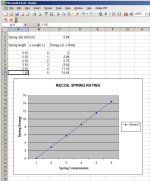What's best is what you are accustomed to. You mentioned 1911, but do you own other types of semi-auto as well? If so, are the slide stops all in the same location? Chances are the slide is always on top of the frame ...
Most shooters in competition use the slide stop as a slide release, even adding slide stops with elongated paddles to facilitate this. When I entered competitions, I did it as practice for the event I hoped I would never encounter. I always release the slide by the slingshot method, because I'm fairly certain that under stress I won't slip up and miss the entire slide.
That's where I am, too.
I'm sure I put more rounds downrange through 1911s than all other guns combined, and I have practiced different techniques to release the slide with the slide release, but I shoot some other guns - Hi-Power, P938 - and have just decided to go with the universal technique of racking the slide whenever I want a round in the chamber, or out of the chamber.
If a 1911 slide drops because the mag is slammed home, there's something wrong with the gun. That's business-as-usual for a Glock, but the slide should stay locked open on a 1911.

